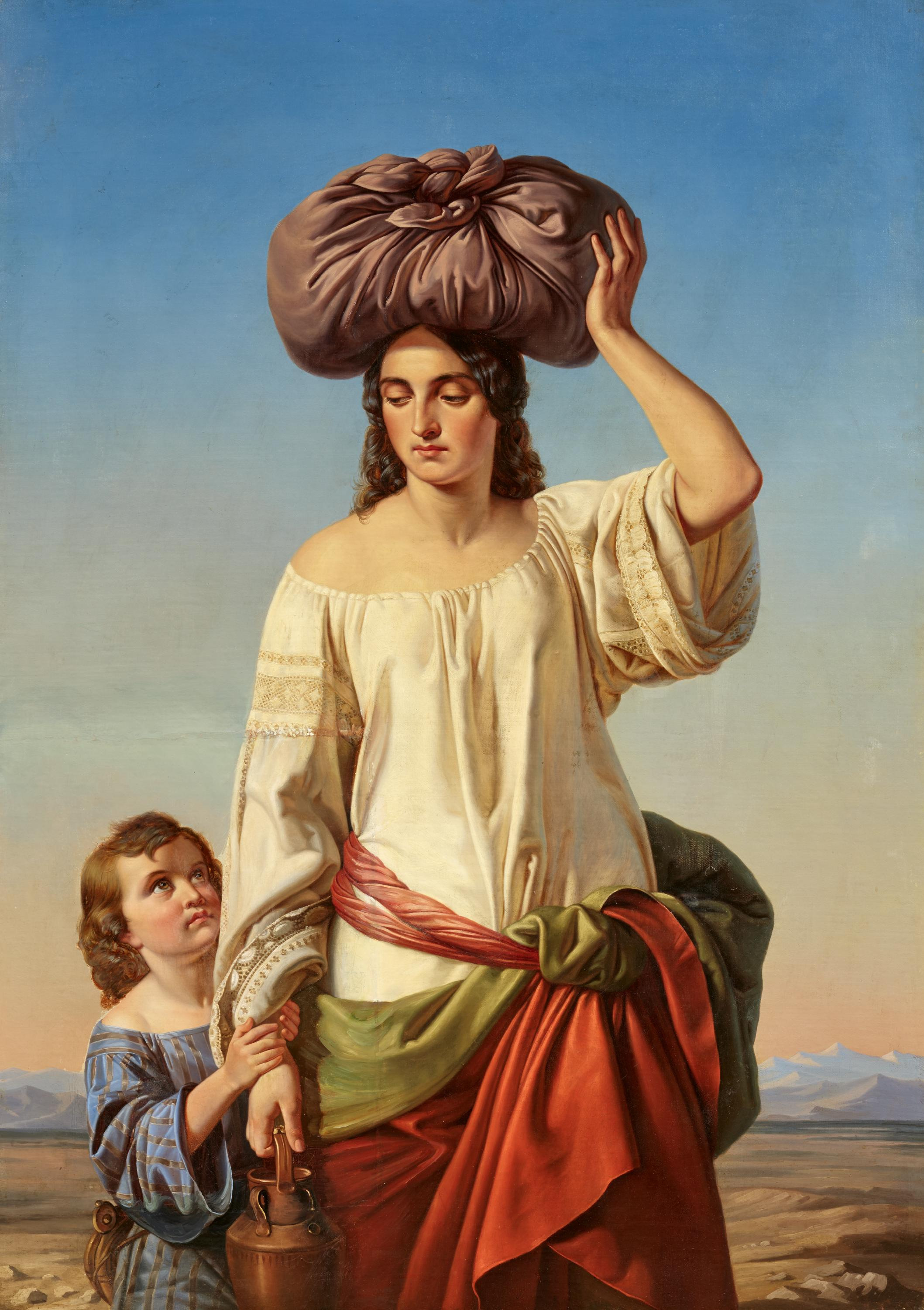JACOBS, PAUL EMILGotha 1802 - 1866
attributed
Title: Hagar and Ismael.
Technique: Oil on canvas.
Mounting: Relined.
Measurement: 170 x 120cm.
Frame: Framed.
Friedrich von Boetticher lists 'Hagar and Ishmael' under number 21, which could perhaps be identified with the present painting.
Cf. Literature:
F. von Boetticher, Malerwerke des Neunzehnten Jahrhunderts. Beitrag zur Kunstgeschichte. I. Dresden 1895, p. 631.
Provenance:
Private ownership, Germany.
We are grateful to Pastor Rudolf W. L. Jacobs, Unna, who confirmed the attribution using a high-resolution photograph.
When a young woman and her child are expelled from the community and 'sent into the desert', this is still a moment that jeopardises their very existence. Hagar and Ishmael, who suffer this fate in the Old Testament, are depicted here in precisely this situation.
The young woman stands very close, in the foreground of the picture. She is holding a bundle on her head with her left hand and carrying a water jug in her right. The boy Ishmael is holding on to her wrist, his eyes raised towards his mother. Hagar's gaze is lowered, but it is not merely a communication with her son. It is also an inward gaze. The two of them stand monumentally in front of a flat, barren desert landscape. Mountain ranges rise on the distant horizon.
The Egyptian slave Hagar has also gained freedom with her banishment from the house of Ishmael's father Abraham. Angels have also prophesied that her son will live and become the progenitor of many nations. She seems to be reflecting on her situation: the monumental figure expresses pride, strength, seriousness and perhaps a little defiance. Despair is far from her mind.
Paul Emil Jacobs conceived this impressive composition. Born in Gotha, the artist was the son of a philologist and ancient orientalist. After training at the Munich Art Academy, he chose to specialise in history painting with a tendency towards Orientalism, but he was also very successful as a portraitist. He became court painter to the Duke of Saxe-Coburg-Gotha but lived for a time in St Petersburg, where he became a member of the Academy. From 1840 onwards, Jacobs lived permanently in Gotha but travelled to Rome repeatedly for extended stays. A study of the present painting is dated 'December 1844'. A signed version of this work, dated 1848, is in private ownership. Jacobs was skilful at increasing the popularity of his paintings through prints. He did the same with this motif of Hagar, which Wilhelm Hesslöhl realised as an engraving in 1848.
Based on the high artistic quality of the present work, it can be assumed that it is a repetition of the very successful motif by the artist himself, as Pastor Rudolf W. L. Jacobs, Unna, has suggested.



